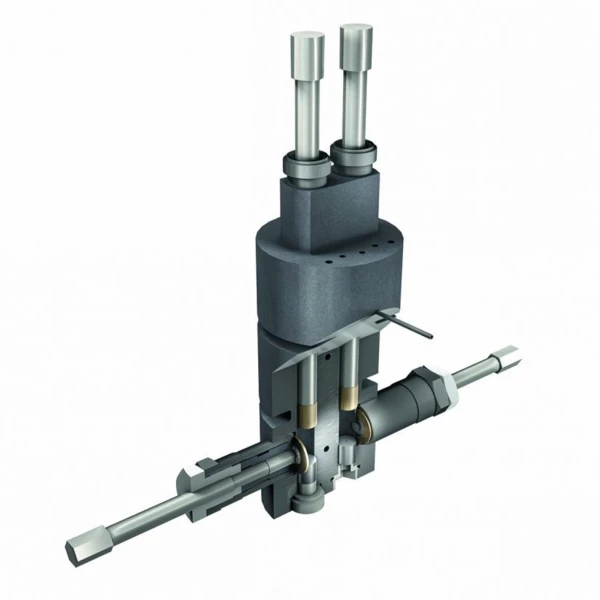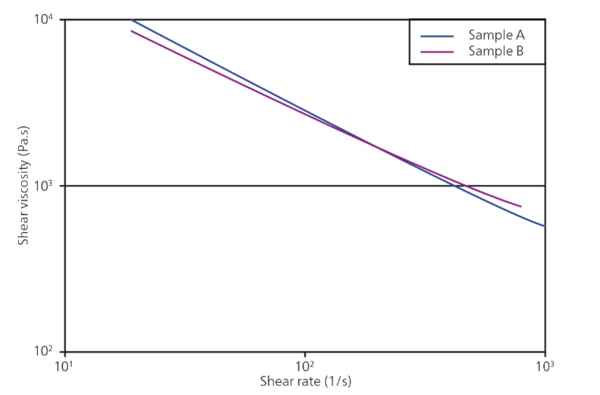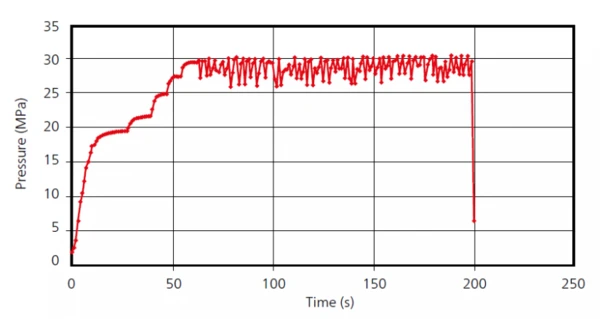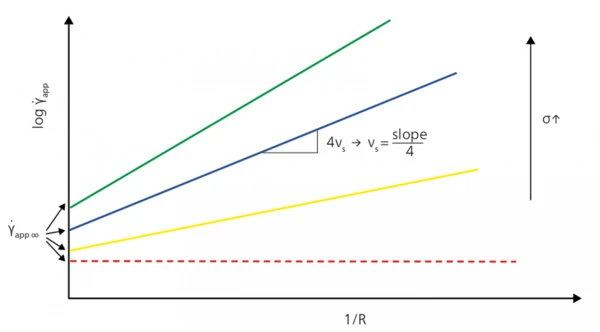
28.03.2022 by Dr. Bob Marsh, (former employee of Malvern Panalytical)
Capillary Rheology of Thermoplastics: An Overview
Generally, capillary rheometers are used to measure melt properties at higher shear rates compared to rotational rheometers, allowing determination of flow behavior under typical processing conditions. Thermoplastics can be characterized using a Kinexus Rotational Rheometer, but also with the Rosand Capillary Rheometer.
Thermoplastics can be characterized using a Kinexus Rotational Rheometer when the requirement is to obtain information concerning the molecular structure and how this affects processing characteristics. This can be investigated further with the Rosand Capillary Rheometer. Read more below!
How does a capillary rheometer work?
High-pressure capillary rheometers possess a temperature-controlled barrel incorporating one or more precision bores fitted with capillary dies at the exit. Melt pressure transducers are mounted immediately above the dies to record the pressure drop as polymer melt is extruded through the dies at programmed flow rates. By the use of a capillary die and an “orifice” or “zero length” die, the shear and extensional viscosities of a polymer melt may be determined simultaneously against shear and extensional rates.

Additional accessories are available to record die swell by means of a laser-scanning gauge and/or, extrudate melt strength, by passing the strand of polymer through a series of speed controlled nip rollers and recording the force (melt tension) as a function of haul off speed [1].
Want to see a live demonstration of the Rosand Capillary Rheometer? Watch our video here!
Capillary rheometers = Higher shear rates
Generally, capillary rheometers are used to measure melt properties at higher shear rates compared to rotational rheometers, allowing determination of flow behavior under typical processing conditions. A particularly important consideration is the ability to measure extensional (elongational) properties at higher extension rates compared to other techniques, and more importantly, at extension rates encountered on a processing line.
Figures 1 & 2 show both shear and extensional data, which illustrates an important and often neglected point: Two polymers may have almost identical shear flow behavior, but may exhibit considerably different extensional properties. As noted previously, many polymer processes (fiber spinning, blow molding) are essentially extensional processes and so determination of extensional viscosity is more important than measuring shear viscosity [1].


Examining processing behavior of thermoplastics
In addition to determining the rheological properties of materials, capillary rheometers are often used to examine processing behavior: Two examples include determination of regions of flow instability and measurement of wall slip or critical StressStress is defined as a level of force applied on a sample with a well-defined cross section. (Stress = force/area). Samples having a circular or rectangular cross section can be compressed or stretched. Elastic materials like rubber can be stretched up to 5 to 10 times their original length.stress.
Flow instability
Flow instability is generally the result of tensile StressStress is defined as a level of force applied on a sample with a well-defined cross section. (Stress = force/area). Samples having a circular or rectangular cross section can be compressed or stretched. Elastic materials like rubber can be stretched up to 5 to 10 times their original length.stress when the melt flows from a large cross-section to a smaller one. If the tensile StressStress is defined as a level of force applied on a sample with a well-defined cross section. (Stress = force/area). Samples having a circular or rectangular cross section can be compressed or stretched. Elastic materials like rubber can be stretched up to 5 to 10 times their original length.stress becomes large enough, the melt fractures. The effect of melt fracture becomes less noticeable as the length of die is increased and as the die temperature is increased. Increasing die length dampens the effect of cross-sectional changes at the entrance of the die, whilst increasing temperature reduces the viscosity and the StressStress is defined as a level of force applied on a sample with a well-defined cross section. (Stress = force/area). Samples having a circular or rectangular cross section can be compressed or stretched. Elastic materials like rubber can be stretched up to 5 to 10 times their original length.stress at the same shear rate. In a capillary rheometer, a region of melt fracture is revealed as a regular oscillation of the melt pressure signal as shown below. The melt effectively fractures and then reforms, with the effect that adjacent elements have experienced different extensional histories and so will swell differently upon exiting the die [1].

Stick condition
A fundamental assumption when calculating rheological properties with a capillary rheometer is that the material at the wall of the capillary die is stationary – this is the so-called stick condition. In practice, polymer melts deviate from this situation at a critical StressStress is defined as a level of force applied on a sample with a well-defined cross section. (Stress = force/area). Samples having a circular or rectangular cross section can be compressed or stretched. Elastic materials like rubber can be stretched up to 5 to 10 times their original length.stress and the material flows as combination of shear flow superimposed onto a plug flow. Wall slip and determination of the critical StressStress is defined as a level of force applied on a sample with a well-defined cross section. (Stress = force/area). Samples having a circular or rectangular cross section can be compressed or stretched. Elastic materials like rubber can be stretched up to 5 to 10 times their original length.stress can be analyzed in a capillary rheometer by measurement of flow curves at constant extrusion pressure (i.e. constant shear StressStress is defined as a level of force applied on a sample with a well-defined cross section. (Stress = force/area). Samples having a circular or rectangular cross section can be compressed or stretched. Elastic materials like rubber can be stretched up to 5 to 10 times their original length.stress) and at the same temperature for at least three sets of capillary dies with the same length to diameter ratio, but with different die bore radius (Mooney’s approach). Employing Equation 1 helps to unveil if a polymeric material is prone to show slip behavior during processing.

For a material not experiencing wall slip (Figure 4) identical shear StressStress is defined as a level of force applied on a sample with a well-defined cross section. (Stress = force/area). Samples having a circular or rectangular cross section can be compressed or stretched. Elastic materials like rubber can be stretched up to 5 to 10 times their original length.stress versus shear rate profiles will be generated. In the case of wall slip occurring, (at constant shear StressStress is defined as a level of force applied on a sample with a well-defined cross section. (Stress = force/area). Samples having a circular or rectangular cross section can be compressed or stretched. Elastic materials like rubber can be stretched up to 5 to 10 times their original length.stress) shear rate will decrease as the die diameter increases (see Fig. 4). Employing Mooney’s approach on the flow data allows determination of the slip velocity, which is equal to the slope/4 and raises with the increase of the shear StressStress is defined as a level of force applied on a sample with a well-defined cross section. (Stress = force/area). Samples having a circular or rectangular cross section can be compressed or stretched. Elastic materials like rubber can be stretched up to 5 to 10 times their original length.stress (o) as shown in Figure 4. Moreover, information regarding critical stress (o c) can be obtained (slope>0). These parameters are often required by computational fluid dynamics software packages along with shear and extensional viscosity data to predict the flow of melts in molds and extrusion profiles.

Conclusion
Polymer melt rheology is a complex subject that requires careful experimental design in order to obtain the information needed to meet an investigator’s requirements.
The capillary rheometer extends the shear rate range attainable in the laboratory, beyond that available in a rotational instrument and allows the flow properties to be measured under typical processing conditions. In addition, the ability to readily determine both shear and extensional properties under application conditions provides the polymer producer and processor with information that is vital to successful use of a polymer melt. Finally, the capillary rheometer enables processing problems to be investigated in a controlled environment without the need to stop production on the factory floor.
New Capillary Application Book available!
Take also advantage of our application books for rotational and capillary rheology and learn how the flow properties of products can be determined by their rheological analysis.
The new capillary booklet delivers an introduction to the technology and subject area, discusses application examples, shows how to characterize fundamental material properties and provides measurements using advanced techniques.
Both books can be downloaded FREE of charge and can be downloaded here.
Sources
[1] Rheology Testing of Polymers and the Determination of Properties Using Rotational Rheometers and Capillary Extrusion Rheometers (azom.com)
[2] Literature: Rheology Principles, Measurements, and Applications, Christopher W. Macosko, ISBN: 1-56081-579-5.
Thanks to Dr. Bob Marsh (former employee of Malvern Panalytical) as the original author of this article!

FREE E-Book
Thermal Analysis and Rheology in Polymer Additive Manufacturing
Discover the secrets behind AM's game-changing capabilities! Our newly released ebook delves deep into the heart of AM, unveiling the power of reliable material characterization techniques, specifically thermal analysis and rheology.